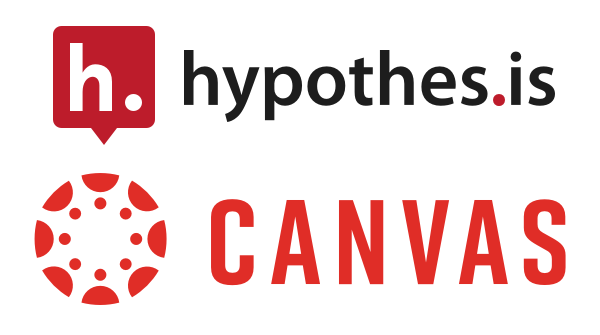Adding a Hypothesis annotation activity to your course supports student success by placing active discussion right on top of course readings, enabling students and teachers to add comments and start conversations in the margins of texts.

About Hypothesis
Hypothes.is is a tool to guide your students through annotations. You can be "inside the text" as students are reading, helping to facilitate comprehension and guide analysis. Any line of text can be highlighted by you to help point students to key parts of any given text.
Hypothes.is is, above all, collaborative. By default, annotations your students make are visible to their classmates (or they can choose to make an annotation private). Visibility means they can be replied to by other students (or the instructor), and then real engagement begins. For example, have students mark and explain the use of rhetorical strategies in online articles and essays. Students can, also, be asked to identify key rhetorical strategies like ethos, pathos, or logos. Or have students identify rhetorical fallacies within an argument. Hypothes.is annotations can also be as simple as highlighting unfamiliar vocabulary in a scholarly article.
Using Hypothes.is also means you can annotate and comment using multimedia elements in the composition process. Students and teachers can use animated GIFs or images, as well as adding URLs to their annotation or reply. This allows for the idea of digital writing to students with particular attention to the use of images.
Research on social annotation activities
What are the cognitive benefits of social annotation activities? The following article makes a case for this idea:
Morales, E., Kalir, J. H., Fleerackers, A., & Alperin, J. P. (2022). Using social annotation to construct knowledge with others: A case study across undergraduate courses. F1000Research, 11, 235. https://doi.org/10.12688/f1000research.109525.2
Sample Annotation Activities
- Annotating "The Rime of the Ancient Mariner"
- Annotating Benito Cereno
- Annotating Marbury v. Madison
- Annotate your course syllabus at the start of the semester
- Annotate instructional pages about course projects
- Annotate and add tags to organize annotations
Teacher Resource Guide (incl. additional examples and sample assignments)
Features to Know About
- Annotate course PDFs, Canvas Pages, JSTOR articles, YouTube video transcripts
- Add context to annotations with links, images, and text formatting
- Add tags to annotations for organization and filtering
- Use "@mentions" in annotations to connect to others and be notified of others' connections to you
- Create private annotations just for personal use
- Automatically assign points for a specific number of annotations and replies
- Review each student's contributions in SpeedGrader
A Simple Annotation Assignment: 3-2-1+2 Method
Try this set of instructions if you want to give students a good introduction to social annotation and using Hypothesis. This is the "3-2-1+2 Method".
In this activity, students are to:
- Leave 3 annotations on sentences/passages of the article that you found surprising and/or taught you something new about the topic of the article.
- Leave 2 annotations on sentences/passages of the article that wound up confirming what you already knew about the topic of the article.
- Leave 1 annotation on sentences/passages that you found confusing. Ask a question in your annotation.
- Tag each annotation as either #newtome, #confirmation, or #question (The tags will allow the instructor to quickly view all the annotations of a particular type.)
- Leave 2 replies to the annotations made by other members of the class or your group. Replies should contain a question for the annotator.
Faculty Perspectives on Hypothesis
In January 2024, OAT hosted an introductory workshop on social annotation using Hypothes.is. The session also featured a discussion by Jey Strangfeld (Sociology), Kyra Pazan (Anthropology), and Kellie Cotter (Psychology) about the ways they're using the tool and students' responses to it.
Use Hypothesis in Canvas
Hypothes.is is an External Tool in Canvas. It is available in all classes and be used immediately in ungraded or graded activities. See the instructions below to get started.
How to set up Hypothesis readings through Canvas Modules
How to set up Hypothesis readings through Canvas Assignments
How to grade Hypothesis annotations in Canvas
A student guide to Hypothesis in Canvas
Additional Resources
Annotation etiquette for students
Updated: April 09, 2025